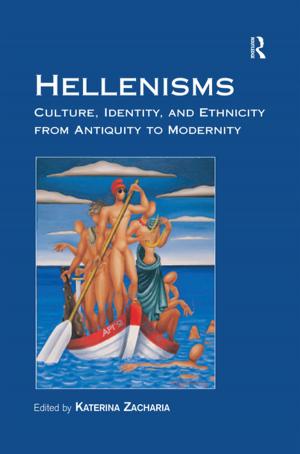Ancient Germanic Warriors
Warrior Styles from Trajan's Column to Icelandic Sagas
Nonfiction, History, Military, Other, Medieval, Ancient History| Author: | Michael P. Speidel | ISBN: | 9781134384198 |
| Publisher: | Taylor and Francis | Publication: | August 2, 2004 |
| Imprint: | Routledge | Language: | English |
| Author: | Michael P. Speidel |
| ISBN: | 9781134384198 |
| Publisher: | Taylor and Francis |
| Publication: | August 2, 2004 |
| Imprint: | Routledge |
| Language: | English |
Presenting a range of evidence for these diverse styles, from Roman art to early medieval bracteate amulets, and from classical texts to Beowulf, the Edda and Icelandic sagas, Professor Speidel here details seventeen different Germanic warriors styles, including berserks, wolf-warriors, club-wielders, long-hairs, ghost warriors and horse-stabbers, and how they indicate an unbroken continuity of customs, beliefs and battle-field tactics.
Ancient Germanic warriors played a decisive role in historical events from 200 BC, when Germanic culture first became identifiable, to AD 1000 when Christianity swept through the Nordic countries. Arising from beliefs and states of mind, a variety of warrior styles manifested themselves in differences of dress, weaponry and fighting technique.
Fully illustrated with over fifty photographs, this vivid and fascinating survey adds a colourful new dimension to our understanding of the history of Europe.
Presenting a range of evidence for these diverse styles, from Roman art to early medieval bracteate amulets, and from classical texts to Beowulf, the Edda and Icelandic sagas, Professor Speidel here details seventeen different Germanic warriors styles, including berserks, wolf-warriors, club-wielders, long-hairs, ghost warriors and horse-stabbers, and how they indicate an unbroken continuity of customs, beliefs and battle-field tactics.
Ancient Germanic warriors played a decisive role in historical events from 200 BC, when Germanic culture first became identifiable, to AD 1000 when Christianity swept through the Nordic countries. Arising from beliefs and states of mind, a variety of warrior styles manifested themselves in differences of dress, weaponry and fighting technique.
Fully illustrated with over fifty photographs, this vivid and fascinating survey adds a colourful new dimension to our understanding of the history of Europe.















